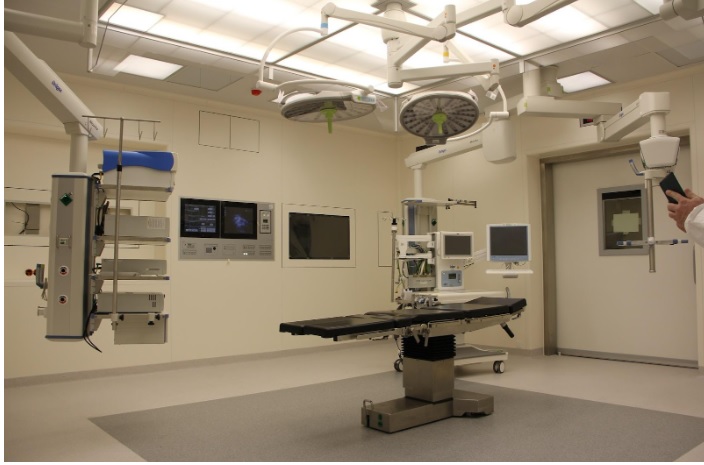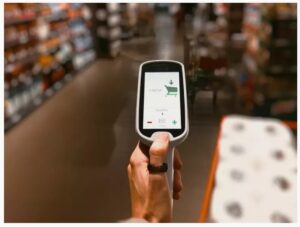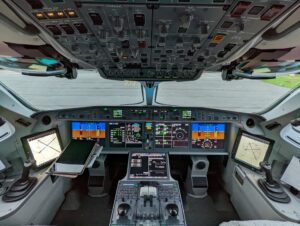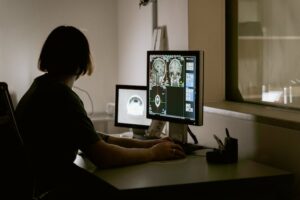
The operating room (OR) is one of the most demanding and high-risk environments in medicine. Precision and efficiency are critical, as even the tiniest slips can result in an adverse outcome. Seamlessly integrating these advanced technologies can help surgical teams improve safety in the OR.
1. OR Black Box
This sophisticated system of sensors and data recorders captures every detail during surgical procedures. Specifically, the Black Box monitors all factors that might affect the results of a procedure — patient vital signs, equipment malfunctions, anaesthesiology and more.
The information collected provides a rich resource hospitals can review to improve OR safety. For instance, Duke University Hospital surgeons use these black boxes to enhance communication and improve patient positioning during surgical procedures to minimize nerve injury risks.
Data from the system can also shed light on possible improvement areas. It’s all about generating top-notch information, according to Teodor Grantcharov, MD, PhD, inventor of the OR Black Box. To ensure the confidentiality of staff and patients, the data capture system blurs faces, distorts voices and deletes recordings after 30 days.
“…Duke University Hospital surgeons use these black boxes to enhance communication and improve patient positioning during surgical procedures to minimize nerve injury risks.”
2. SurgiBox
One of the main distinguishing features of an OR is sterility. Surgical site infection is a genuine concern, already affecting 3% of patients undergoing operations. However, emergency procedures can’t always wait for a clean room, as is the case in war zones and areas hit by natural disasters. SurgiBox is a portable OR kit surgeons can use to create sterile operating environments.
The system includes an aseptic bubble with inward-facing armholes for the surgeon. There’s a smart module attached to regulate airflow, and a rechargeable battery pack to power medical equipment and emergency lighting. Everything fits neatly in a backpack. Obviously, SurgiBox is not as hygienic as an actual OR, but it’s about as safe as it can get if you look at it in the context of where it’s being used.
3. AI-Assisted Surgeries
Robot-assisted surgeries have been around for some time now with scores of success stories. With artificial intelligence and deep learning capabilities, these robots are smarter and more capable than ever.
In addition to their highly advanced physical capabilities, AI-enabled robots can analyze surgeries in real time and provide decision support to surgeons, improving their precision. According to recent research, AI-assisted procedures resulted in five times fewer complications than surgeons operating alone.
Advanced algorithms can also detect anomalies more accurately, allowing surgeons to target affected areas more precisely. For instance, in colorectal surgery, machine-learning tools can analyze pre-operative scans to identify vulnerable regions, reducing the chances of inadvertent damage and improving decision-making.
“…AI-enabled robots can analyze surgeries in real time and provide decision support to surgeons, improving their precision.”
4. Smart Operating Rooms
A smart OR features ergonomic upgrades and integrated state-of-the-art functions for improved safety and efficiency. Effortless human-machine interaction is crucial in a theater full of delicate medical equipment, which is where ergonomics comes in.
Smart ORs facilitate real-time consultations with other specialists outside the room, allowing them to provide remote assistance without delay. This function can mean the difference between life and death in complicated surgeries.
5. Internet of Medical Things (IoMT)
IoMT enables real-time machine-to-machine interactions and data streaming using cloud connectivity. These interconnected devices provide dynamic information on a centralized hub to improve patient safety in the operating room. For example, access to the same surgical status data frees up circulating nurses to keep their focus on the patient rather than staring at different screens looking for specific info.
IoMT machines can also make operations more efficient. For instance, using a laparoscope for image-guided surgeries can minimize tissue damage and blood loss by providing a clearer, real-time view of the body during the procedure.
“[A]ccess to the same surgical status data frees up circulating nurses to keep their focus on the patient…”
Technology Is Shaping the Future of Surgery
As medical innovations continue to advance, the future of surgery will likely feature increased autonomy with integrated machine learning. The WHO estimates a shortfall of 10 million health workers globally by 2030. These technologies help fill the gaps where the system is running short. For example, remote surgery can bring life-saving expertise to remote areas without specialized health care facilities.
AI-powered surgical robots should also become more mainstream. Its global market is growing fast and is expected to reach a valuation of $25.7 billion by 2032. In turn, this can lead to an increase in demand for minimally invasive surgical procedures.
Tech for Safer Operating Rooms
Health care will always be people-centric, but technology has its place in ensuring a well-rounded experience. By providing the ability to observe real-time data and respond to situations quickly, these innovations facilitate more precise surgery and less chance of complications. This collaboration will only get better over the years, resulting in safer, more efficient surgical environments.
Also Read AI’s Contributions to Underwater Environmental Protection Efforts
- SEO Powered Content & PR Distribution. Get Amplified Today.
- PlatoData.Network Vertical Generative Ai. Empower Yourself. Access Here.
- PlatoAiStream. Web3 Intelligence. Knowledge Amplified. Access Here.
- PlatoESG. Carbon, CleanTech, Energy, Environment, Solar, Waste Management. Access Here.
- PlatoHealth. Biotech and Clinical Trials Intelligence. Access Here.
- Source: https://www.aiiottalk.com/new-technologies-creating-safer-operating-rooms/
- :has
- :is
- :not
- :where
- $10 million
- $UP
- 10
- 2030
- 30
- 7
- a
- ability
- About
- access
- According
- accurately
- actual
- addition
- advance
- advanced
- adverse
- affect
- affected
- affecting
- After
- algorithms
- All
- Allowing
- alone
- also
- always
- an
- analyze
- and
- ARE
- areas
- around
- artificial
- artificial intelligence
- AS
- Assistance
- At
- Autonomy
- battery
- BE
- become
- been
- being
- Better
- between
- Black
- blood
- Blurs
- body
- Box
- boxes
- bring
- bubble
- but
- by
- CAN
- Can Get
- capabilities
- capable
- capture
- captures
- care
- case
- centralized
- Chance
- chances
- circulating
- clean
- clearer
- Cloud
- collaboration
- comes
- Communication
- complicated
- complications
- Concern
- confidentiality
- Connectivity
- consultations
- context
- continue
- contributions
- create
- Creating
- critical
- crucial
- damage
- data
- Days
- Death
- decision
- Decision Making
- deep
- deep learning
- delay
- Demand
- demanding
- detail
- detect
- Devices
- difference
- different
- disasters
- Duke
- duke university
- during
- efficiency
- efficient
- effortless
- emergency
- enables
- enhance
- ensure
- ensuring
- environmental
- environments
- equipment
- estimates
- Even
- EVER
- Every
- everything
- example
- expected
- experience
- expertise
- faces
- facilitate
- facilities
- factors
- FAST
- Feature
- Features
- fewer
- fill
- fits
- Focus
- For
- from
- full
- function
- functions
- future
- gaps
- generating
- genuine
- get
- Global
- global market
- Globally
- Growing
- Have
- Health
- Health Care
- help
- high-risk
- highly
- Hit
- Hospital
- hospitals
- However
- HTML
- HTTPS
- identify
- if
- improve
- improved
- improvement
- improving
- in
- includes
- Increase
- increased
- infection
- info
- information
- innovations
- instance
- integrated
- Integrating
- Intelligence
- interaction
- interactions
- interconnected
- Internet
- invasive
- IT
- ITS
- jpg
- Keep
- kit
- lead
- learning
- less
- Life
- light
- Lighting
- likely
- Look
- looking
- machine
- machine learning
- Machines
- Main
- Mainstream
- make
- malfunctions
- Market
- mean
- medical
- medical equipment
- medicine
- might
- million
- minimize
- module
- monitors
- more
- more efficient
- most
- Natural
- New
- New technologies
- NIH
- now
- observe
- of
- on
- ONE
- only
- operating
- Operations
- or
- Other
- Outcome
- outside
- over
- Pack
- patient
- patients
- phd
- physical
- Place
- plato
- Plato Data Intelligence
- PlatoData
- portable
- positioning
- possible
- power
- precise
- precisely
- Precision
- procedure
- procedures
- protection
- provide
- provides
- providing
- quickly
- rather
- reach
- Read
- real
- real-time
- real-time data
- recent
- reducing
- regions
- Regulate
- remote
- remote assistance
- research
- resource
- Respond
- result
- resulted
- resulting
- Results
- review
- Rich
- risks
- robots
- Room
- Rooms
- running
- safe
- safer
- Safety
- same
- scans
- scores
- screens
- seamlessly
- sensors
- shaping
- shed
- Short
- should
- Signs
- site
- situations
- smart
- smarter
- some
- sophisticated
- specialists
- specialized
- specific
- specifically
- Staff
- stanford
- state-of-the-art
- Status
- Stories
- streaming
- success
- Success Stories
- support
- surgeon
- Surgery
- surgical
- system
- Target
- teams
- Technologies
- Technology
- than
- that
- The
- The Future
- Theater
- their
- Them
- These
- things
- this
- time
- times
- tissue
- to
- tools
- TURN
- undergoing
- underwater
- university
- upgrades
- use
- used
- using
- Valuation
- View
- vital
- VOICES
- Vulnerable
- wait
- war
- which
- WHO
- will
- with
- without
- years
- you
- zephyrnet
- zones











